Blue Lotus raises a toast to the entrepreneurial spirit of artisans of Telangana and Andhra Pradesh. As this network of weavers, dyers and designers turns seven this November, the team headed by Dharmendra Vaddepalli looks back at their journey.
A model showcases a tussar sari
| Photo Credit:
Special arrangement
“The flower Blue Lotus in Buddhism is a symbol of victory of the spirit over the senses, of intelligence, wisdom and knowledge; it represents a partially opened bud, whose centre is unseen, the embodiment of the ‘perfection of wisdom’. Our journey at Blue Lotus is this quest for knowledge and excellence,” says Durga Lakshmi Venkata Swami who co-founded Blue Lotus with Dharmendra in 2015.
Textile technologist Durga Lakshmi, one of the founding members of Khamir, a platform to showcase Kutch’s craft heritage, and Dharmendra, an art graduate hailing from a weaving community, had worked together in Dastkar Andhra (that works directly with handloom co-operatives) before setting up Blue Lotus. The Blue Lotus enterprise was envisioned as a means to bring value to three entities — artisans, customers and entrepreneurs (who bridge the gap between the two).
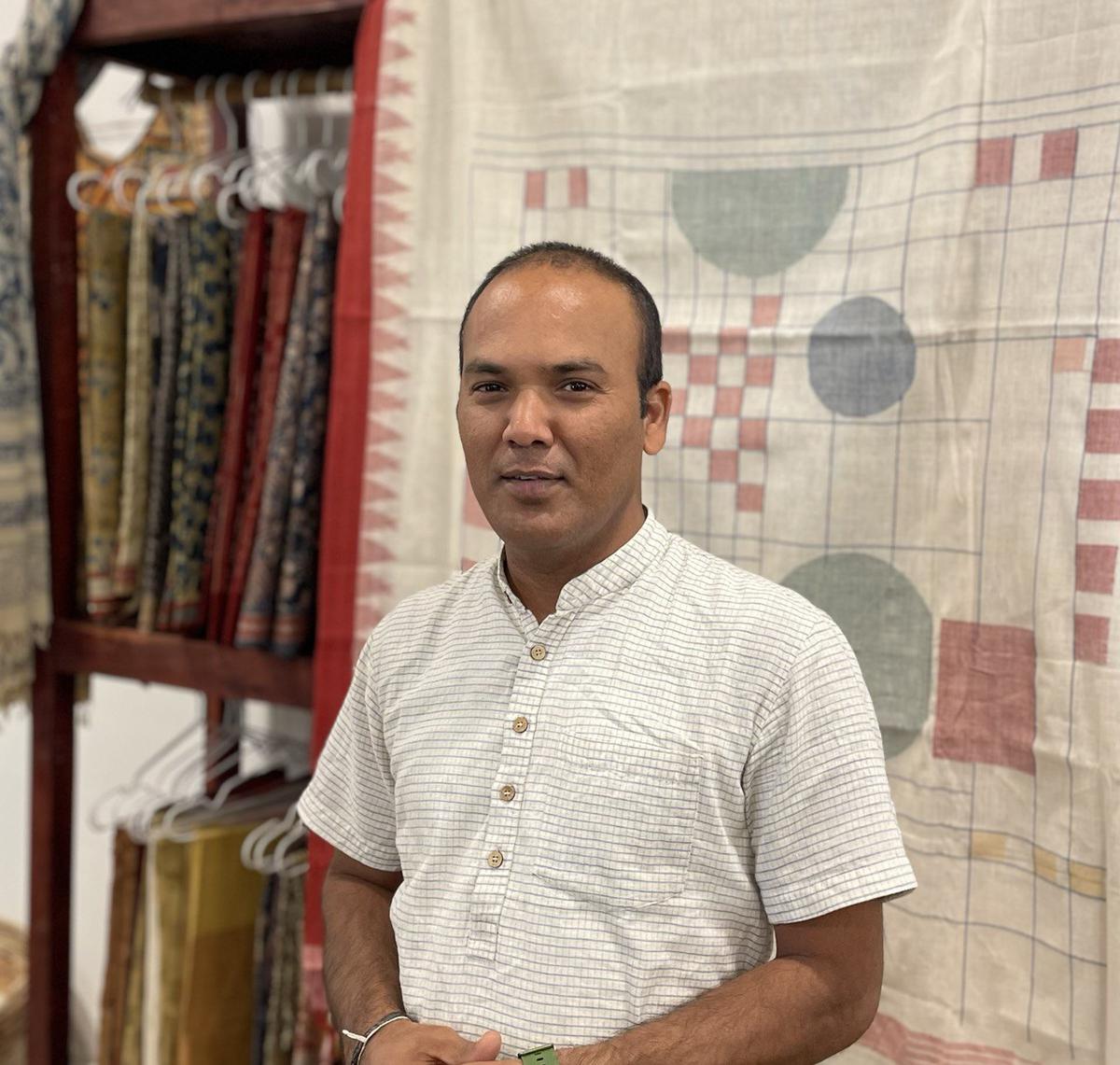
Dharmendra Vaddepalli
| Photo Credit:
Special arrangement
“The material (cotton ) and the handloom process are sustainable and environment-friendly, but what does it take to sustain institutions that form the ecosystem of an enterprise? It needs to give fair value to the maker (weaver), the organisation and the customer,” points out Durga.
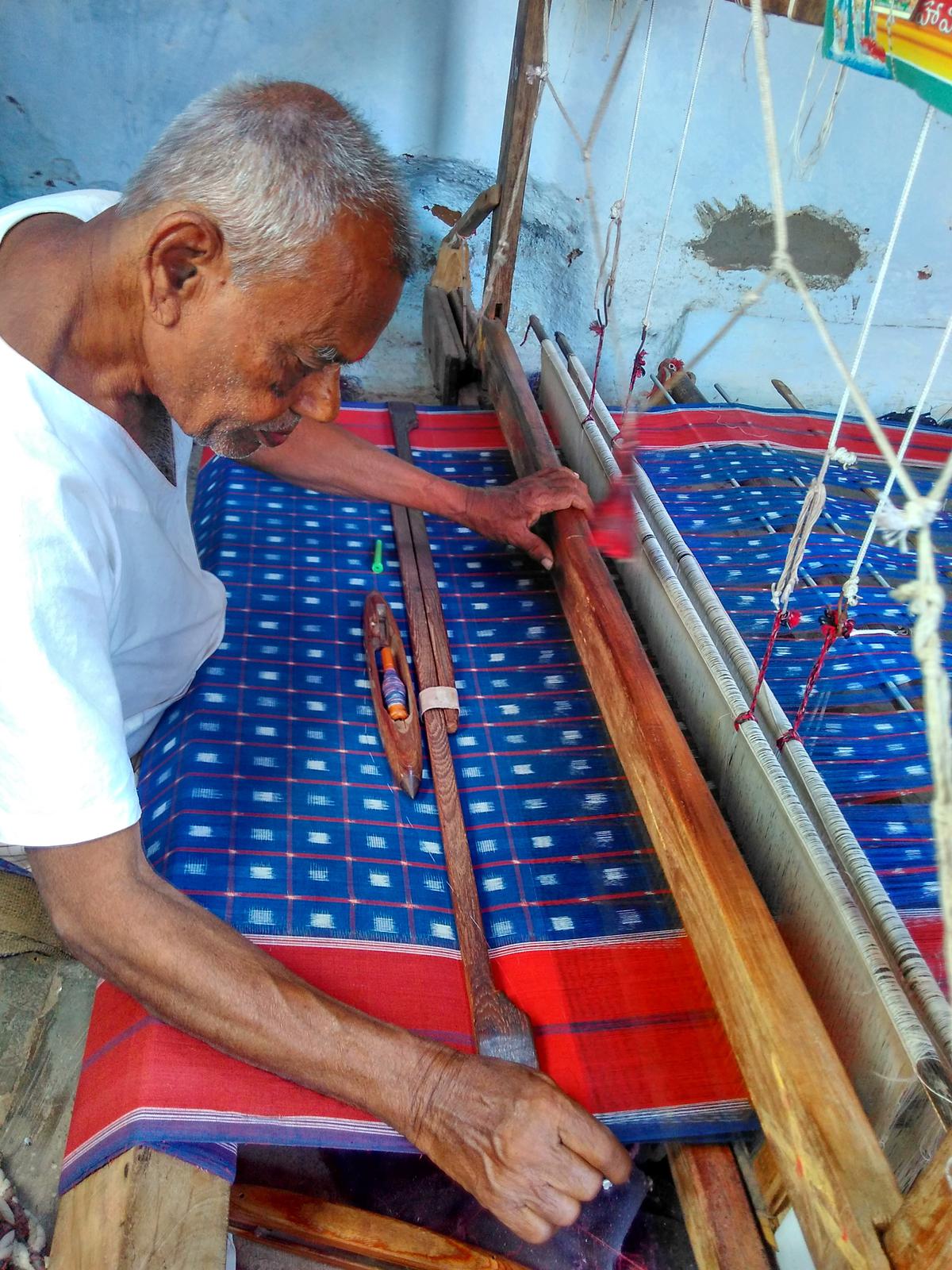
A weaver at the loom
| Photo Credit:
Special arrangement
Housed on the second floor of the Crafts Council of Telangana building in Banjara Hills, Blue Lotus tells stories of exquisite textile traditions and handspun weaves. “Every region has a unique handloom and we aimed to build a community by bringing this identity to the fore,” she says.
The Blue Lotus team comprises Dharmendra, the face of Blue Lotus, Kurma Sambasiva Rao and Reddam Narasimha who handle the production and stocks. The enterprise is connected with 55 looms, over 50 weavers and seven dyers across the two Telugu-speaking states
Tryst with natural dyes
Chirala-based weaver Yaarasi Venugopal has been associated with Blue Lotus since its inception. With an experience of over 15 years in the textile industry, Venugopal’s shift to weaving came in 2016 after learning the difference between non-azo dyes (chemical) and azo-free dyes (natural). The Vijayawada native shifted to Chirala to set up a natural dyeing centre and used to dye around 20 bales (1 bale= 100 kilograms) to supply to weavers in Chirala and Narayanpet in Andhra Pradesh and also in Tamil Nadu. Using indigo blue, pomegranate, sappan wood, katha and ratanjot dyes, Venugopal has charted his growth story in these eight years. “From leasing a 300 square-yard space, I was able to buy a 520 square-yard plot and employ eight people,” he says.
Sixty six-year-old Kodabati Krishna Rao from Ponduru had worked at different levels in the Ponduru Cooperative Society. Although he learnt dying at home, his interest in natural dyes peaked after his retirement. “Since we can dye only 10 kilograms at a time, the shades are not always even,” he says. Presently his unit has 22 weavers producing around 100 metres of cloth to make saris and dupattas
Blue Lotus’ product line includes handspun saris and garments that are supplied to brands such as Nalli Silks and Fab India as well as a sustainable denim line that is exported.
A blend of natural dyes and design interventions adapted to market needs helped them revive the traditional ikat cotton saree at Koyyalagudem in Nalgonda district (2018). Four families of the town were offered ₹4,000 per sari (as against ₹2,000 they would earlier earn for a chemical dye sari) to experiment on the looms. “As a result, the 25 saris made that month soon found a buyer who agreed to purchase the saris for a year. With renewed confidence, the weavers could carry on without our support,” adds Dharmendra.
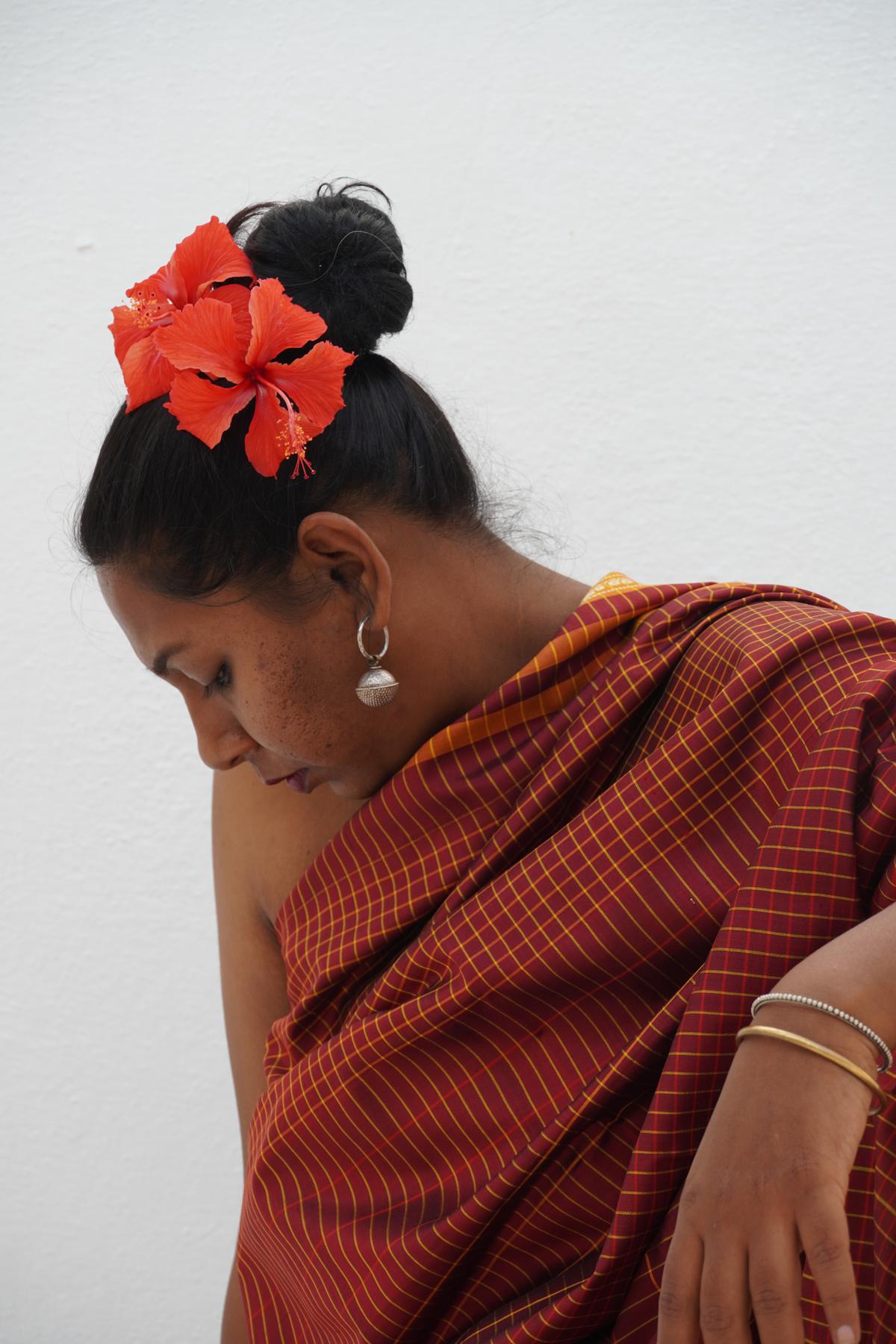
This also helped stem the migration of weavers. For instance, Karnati Vasudev, who worked as a salesman at a jewellery shop in Hyderabad, is now a proud owner of three looms at Koyyalagudem where he has employed three persons. “In 2017, it was a risk to leave a job to return to my village,” recalls Vasudev. Back then he would weave five ikat cotton saris to earn around ₹ 20,000 from Blue Lotus. “Now we run our enterprise and weave around 12 saris from three looms, with that, we make a ₹20,000 profit. I am happy that I am able to give employment too.”
While Blue Lotus’ tryst with handlooms continued at Gadwal (with gold zari saris), Madhevpur near Kaleshwaram (handspun tussar), Ponduru in Srikakulam (khadi using jamdani), its experimentation with natural dye denim at Kamalapur Handloom Society in Karimnagar in 2019 has been a feather in their cap. “Denim normally follows a twill weave pattern with two yarns woven together, ” explains Dharmendra, adding: “We used four yarns in natural dye to weave a denim that is distinctive.” The team has produced around 2,000 metres of indigo denim for brands such as Sonica Sarna.
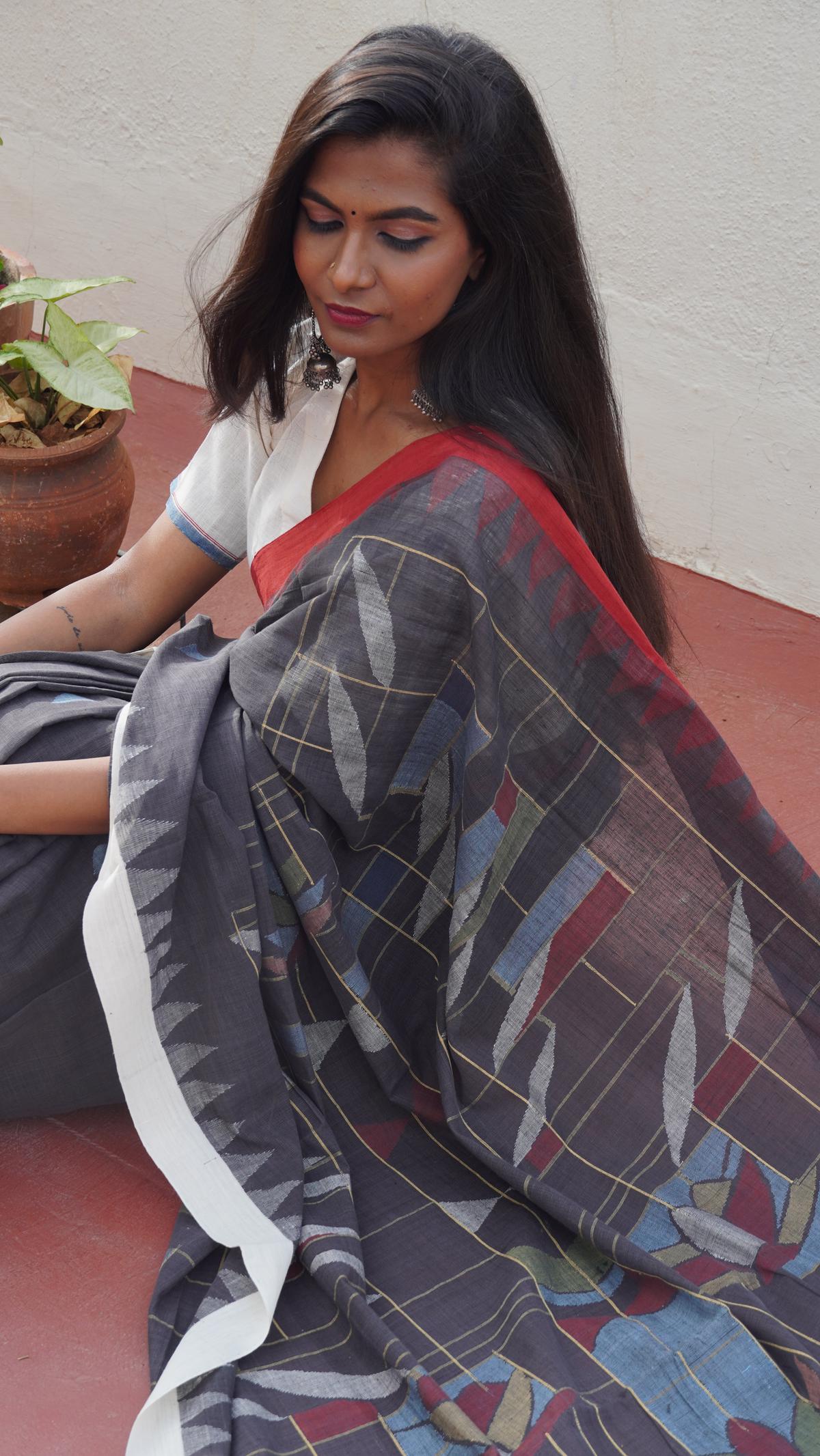
A model in a jamdani sari
| Photo Credit:
Special arrangement
Dharmendra firmly believes that a change in approach will give a fillip to the handloom industry. “People need to look at a weaver as an artist, a creative person and not just as labour. Also, those who are passionate about working in the sector should think of how to take it forward, not just what they will gain from it. Only when you put faith in weavers will they believe us.”


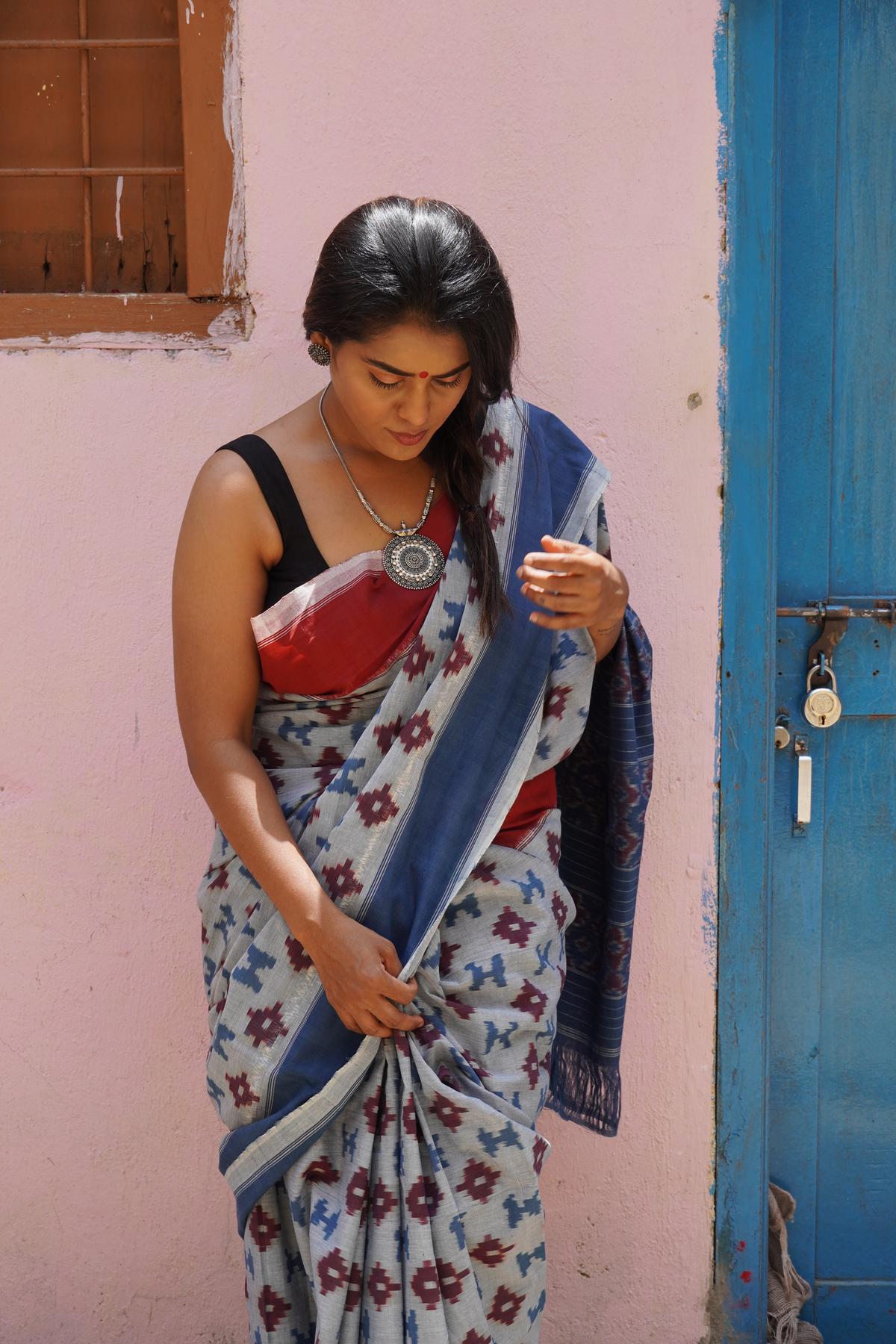
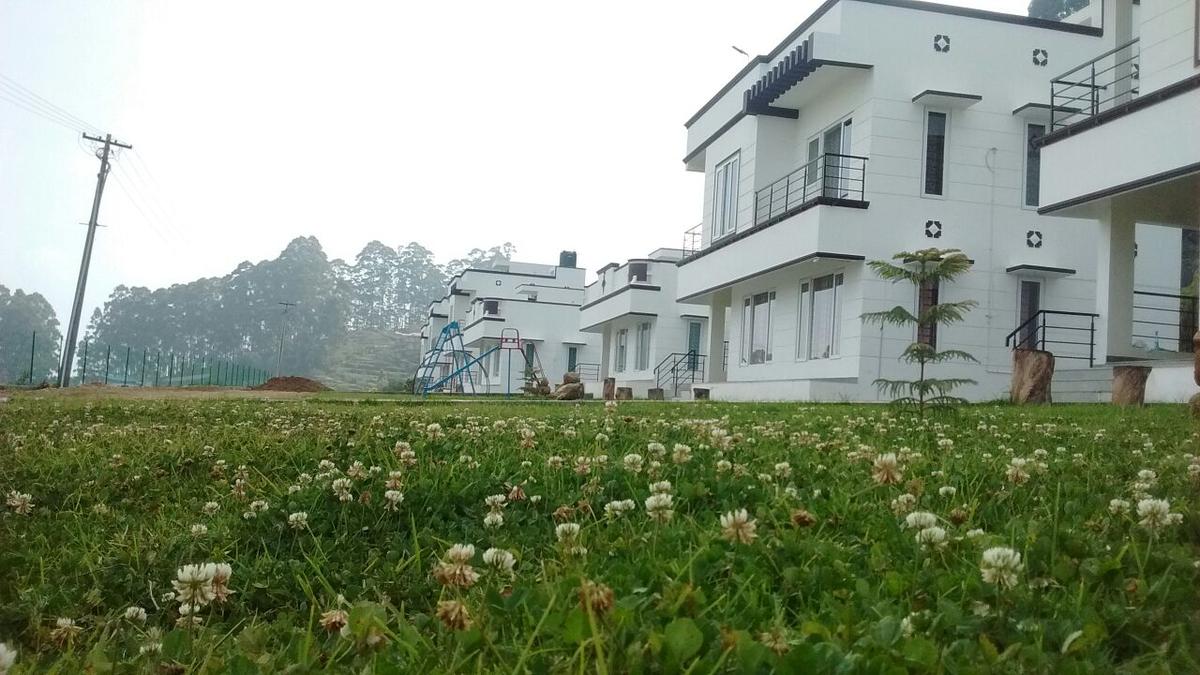

.jpg)


